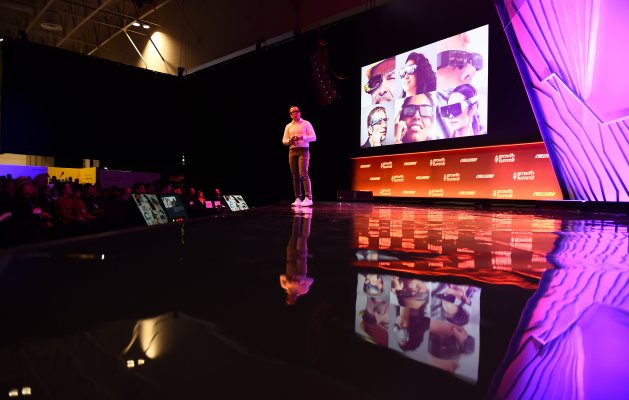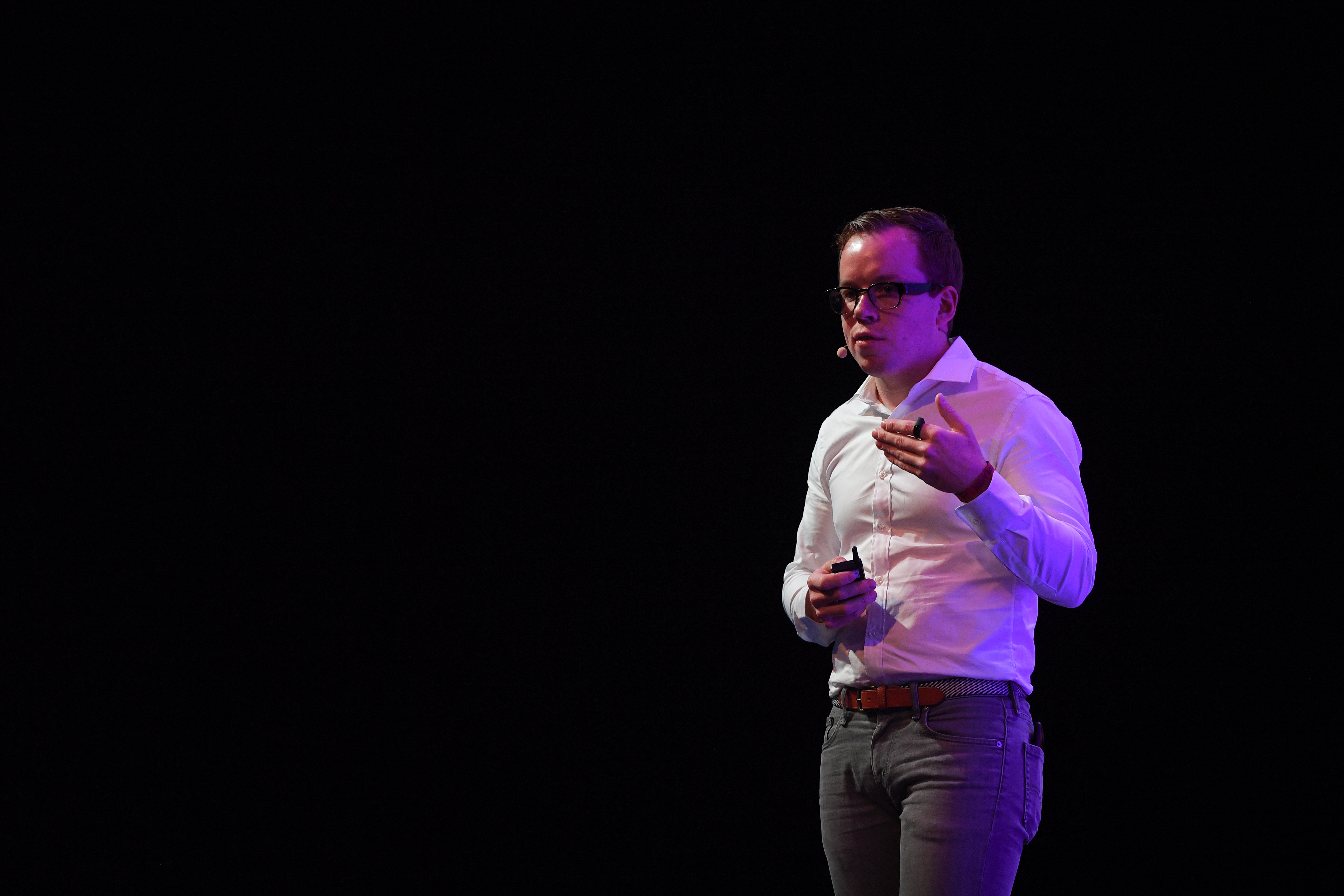Waterloo, Canada-based hardware startup North is a rare bird when it comes to the tech sector: It began life as an entirely different kind of hardware startup as Thalmic Labs in 2012, and launched a major pivot and re-brand in 2018.
The shift included a new name, and an entirely new product focus. It launched its Focals smart glasses last year, and earlier in 2019 sold the tech behind its original product a gesture control armband called Myo, to CTRL-labs.
This kind of system-shocking directional change can cause whiplash at even far less ambitious software startups, but when I spoke to co-founder and CEO Stephen Lake about the change and the company’s new focus, he spoke of the about-face more as a natural evolution long in the making than a late-stage shift.
“It goes way back when we started Thalmic in 2012,” Lake said. “Actually, we were working on our Myo product, which was an input for heads-up displays, VR headsets, etc. We realized back then, when we were pairing it up with the early versions of [Google] Glass and a whole variety of other displays and smart glasses, that the glasses were so far from being the consumer product that we actually wanted to wear and use. And we said, ‘We think directionally this is going to exist, we think there’s this future where we can bring technology with us into the world end up being less distracted, more present, but still get those benefits we get from computing today.’ Instead of the future of staring at screens, or being cut off in like Ready Player One world in the future, actually bringing technology and make it a seamless part of our world.”
Basically, Lake positions the problem as a kind of classic ‘cart before the horse’ dilemma: How could its interface device for a future class of devices achieve meaningful purchase if that class of devices was off to a slower start than anticipated? A less ambitious startup might’ve refocused on innovating accessories for an established device market, but Lake says his company instead took aim at pioneering an entirely new class of consumer device.
“We realized we had a choice, right? It was like we believe the category is going to exist,” he said. “We started off, we thought of Myo as the mouse for heads-up displays. But the actual displays weren’t there. And so the decision was, do we wait until some big tech company, [maybe develops] version three, figures it out eventually over time, and we build these peripheral devices for it, or do we actually go and try and address the key challenges in building the glasses themselves. So of course, we chose the latter.”
Lake says “of course” his startup chose to pursue building smart glasses, but it’s hardly a choice to undertake lightly – especially not with investors on the books including Amazon and Intel. The startup is one of the highest-funded pre-IPO companies in Canada, with $200 million in combined equity and debt funding.
It had put in years of hard work developing Myo, which used an innovative, non-invasive myoelectric sensing method to interpret signals from arm muscles through skin. But North has done plenty of innovative work on the tech that powers Focals, too – including achieving a product design that’s the closest we’ve seen yet to being indistinguishable from standard optical glasses.
“This is like, think of it as the Apple I in this category of wearable computing,” Lake says of Focals and their context in the history of wearable computing he envisions.
“We’re very early in it, but we think it’s the best product yet for consumers – it’s the first one that I’ve literally bumped into people on the street wearing the product […] But we’re using that as well to learn from those consumers. We had a bunch of hypotheses and, and we have a whole bunch of things we want to test and understand around the UX, the interaction, how much information to show what applications are great for which users, what’s resonating for people, and we’re getting feedback every single day, because people are using the product.”
Despite being six years in already, Lake says that the company’s vision is still long-term for Focals, and that this is very much a first version that will need a lot of refinement before it’s a broad success. He notes that “it’s a three, five, ten-year vision for us to go from the very first version of Focals to, call it the ‘iPhone X’ of the category,” but that investors are on board with this timeline.
“I think we’re fortunate that we have investors that have bought into a long-term vision and really believe in what we’re doing and understand the horizon and, and the methodical approach to it,” Lake said.
“So everyone’s kind of aligned on that. None of that’s to say we’re moving slowly. And we’re launching new stuff, new features, every single week, we’ve got tons of work happening in the background. So we’re moving very quickly. But understanding this is a long-term vision execute on it’s not about, you know, maximizing this year at the expense of the long term.”
One reason investors might be open to taking the risk is the potential reward. As Lake notes, there are a lot of spoils up for grabs when it comes to major, tectonic shifts in computing platforms – provided you make the right bet on what comes next.
“In the transitions of computing platforms that we’ve had in the past, from mainframe to desktop, the industry structure completely changed — the leading companies in mainframes, like IBM and Sun Microsystems, they weren’t the leaders of desktops,” he said.
“And then when mobile came along, you would have thought, ‘Oh, you know, Windows should win mobile. They have more resources. They’re everywhere. It’s the platform everyone’s using’ but then the form is just different. There are new constraints. So I think there’s this interesting window, when you have a platform shift, where, for a number of reasons, there’s an opportunity for a new entrant to actually be the meaningful or dominant player in that form.”
The questions, as always, remain how long a runway investors are willing to accept in order to reap those rewards and whether the bet you’re making on the next big platform switch is the right one. For now, however, Lake and North are focused on a step-by-step approach of adding features to Focals, in the hopes that small steps will accrue to a key marathon win.

